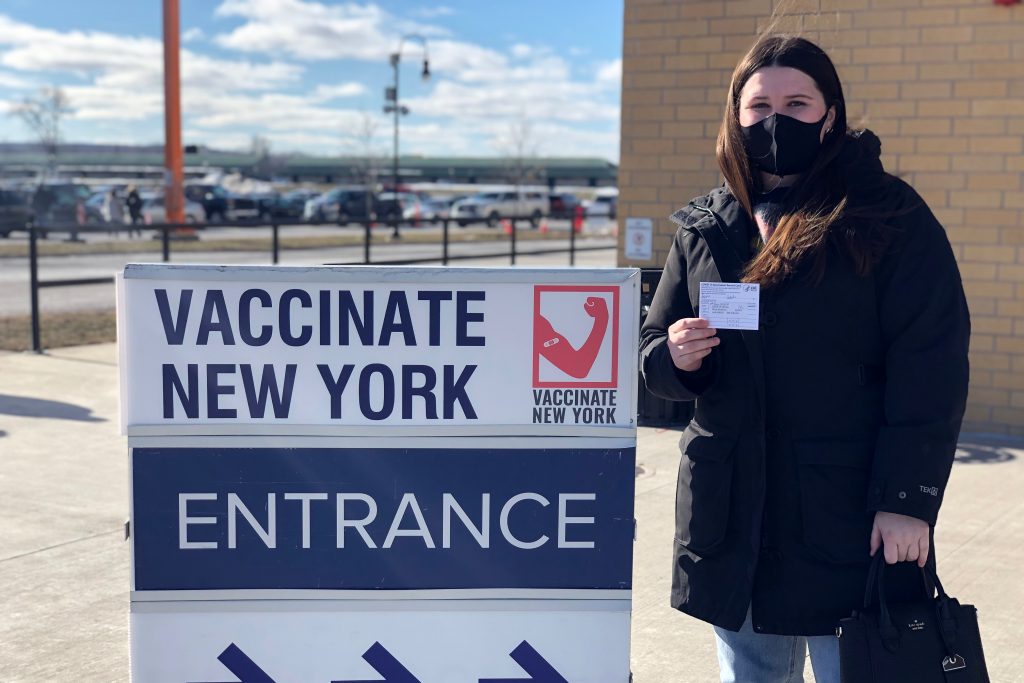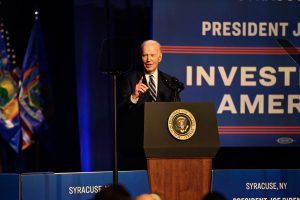Commentary: My experience getting the COVID-19 vaccine
Commentary: My experience getting the COVID-19 vaccine

If you had told me a year ago that the next twelve months would consist of living through a global pandemic, quarantining for months, wearing masks, and staying six feet apart, I would not have believed you. Then again, who would? Flash forward almost twelve months later, and here we are, a year into the COVID-19 pandemic.
The hardships brought on by the pandemic have touched everyone’s lives in one way or another and have changed how we operate. As someone with an autoimmune disease, the pandemic has been tough to navigate — socially, physically, and mentally, as it has been for many. I have been living with Type 1 diabetes (T1D) for 11 years, and of those 11, this past year has probably been the toughest.
Even more than for myself, the pandemic has brought immense stress to my family — the what-ifs and worries of what would happen if I were to contract the virus and if I would be okay. I knew the risks associated with diabetes and COVID-19, that my chances of complications are higher, but because I have good control of my condition, I tried not to stress about it too much.
That was until Feb. 15 when New York entered phase 1b of its vaccination plan, and I started receiving almost daily texts or emails, sometimes both, from my mom urging me to make an appointment for a vaccination. Under New York’s Phase 1B, people with underlying conditions such as cancer, kidney disease, mental disabilities, asthma, obesity, and Type 1 and Type 2 diabetes, among others, are now eligible to receive the vaccine.
I felt uneasy about getting the vaccine. Besides my condition, I am young and relatively healthy. I felt even though the vaccine was available to me, I should wait until people who were older or sicker than me got it, or at least until more people my age were getting it. I knew my life wouldn’t drastically change with or without the vaccine (mask-wearing, social distancing, weekly testing at the dome), but, ultimately, I recognized it would make my mom, and me, feel a lot better.
So I logged on and, much to my surprise, had no problem booking an appointment for a day and time that worked for me. From what I had heard from friends and family from other states, this was not the case, but New York seems to have an organized vaccine rollout plan. In Central New York alone, there were multiple locations to choose from, including a mass vaccination site at the New York State Fairgrounds, which was where I went.

When the day I would receive my vaccine finally arrived, I didn’t really know how to feel or what to expect. My roommate drove me to my appointment and came inside with me for moral support (although she couldn’t actually come with me when I got the shot, she had to sit in a waiting area). Once I weaved my way through the registration and check-ins, I learned from Carrie, the gracious RN who gave me my vaccine, that I would be getting the Pfizer shot.
After I got the shot, I was directed towards a waiting area where I was required to wait 15 minutes before leaving in case of a bad reaction. Sitting in that huge exposition center and looking around at others sitting beside me (six feet apart) who had just gotten their vaccines made me feel hopeful. It felt like a weight had been lifted off of my shoulders.
As I am writing this now, about six hours after I got the shot, I am experiencing a little bit of the chills, but beyond that, I feel good. I am blessed to have been able to receive the vaccine because I know for some people living with T1D in other states, this is not the case.
Studies as recent as last month have continued to find that both people with T1D and T2D are more susceptible to severe complications from COVID-19. One report issued by the American Diabetes Association in February found that compared to the average person, someone with diabetes is 3-4 times more likely to suffer from severe complications and hospitalizations from COVID-19.
Despite this data, the CDC has maintained its prioritization of vaccinating people with T2D before those with T1D. Under their current classifications, T2D is listed as a condition that puts someone at an “increased risk” of severe illness from COVID-19, while those with T1D are under the category of “might be at increased risk” for severe illness from COVID-19.
While the CDC’s classifications are merely guidance for states, they should be amended to put both T1D and T2D individuals at the same level, as they are both at risk. Many states, including Alabama, Rhode Island, West Virginia and Maryland, have made the change to include people with T1D in the “increased risk” category, but many others also have not. I was lucky enough to be in New York, a state that did.
On March 23, I will receive my second shot and be on my way to being fully vaccinated. I know I will still need to abide by COVID-19 restrictions to protect those around me, but knowing that I will have immunity against the virus puts my family and me at ease. If you are eligible now for the COVID-19 vaccine or will be in the coming months, I urge you to think and reflect on what this protection could mean for you, your family, and others around you and to get vaccinated if you are able and willing.





